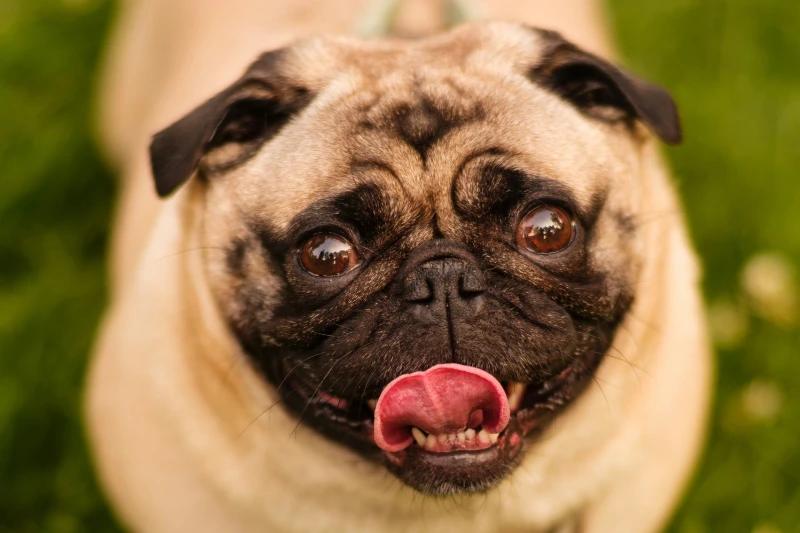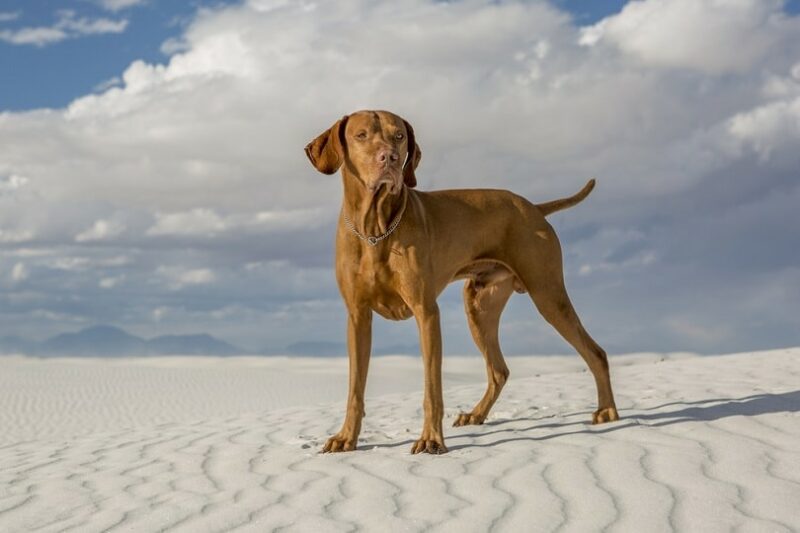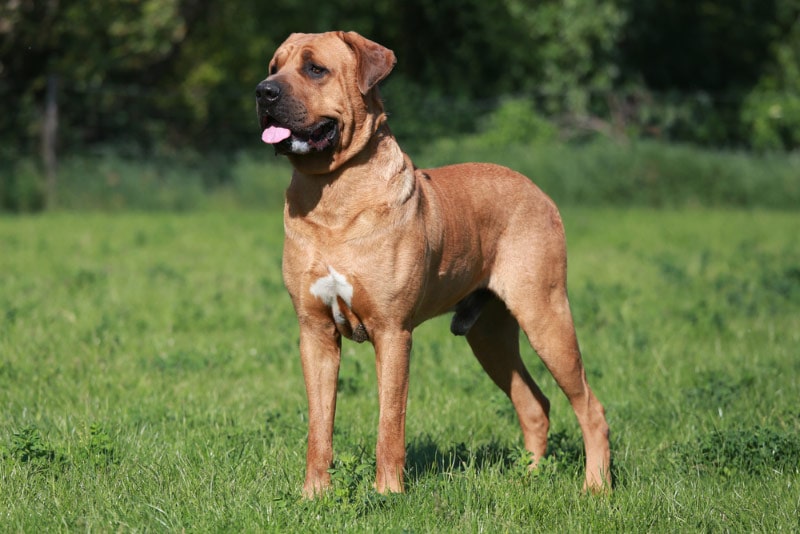Chow Chow vs. Pomeranian: Breed Overview & Differences (With Pictures)
Updated on
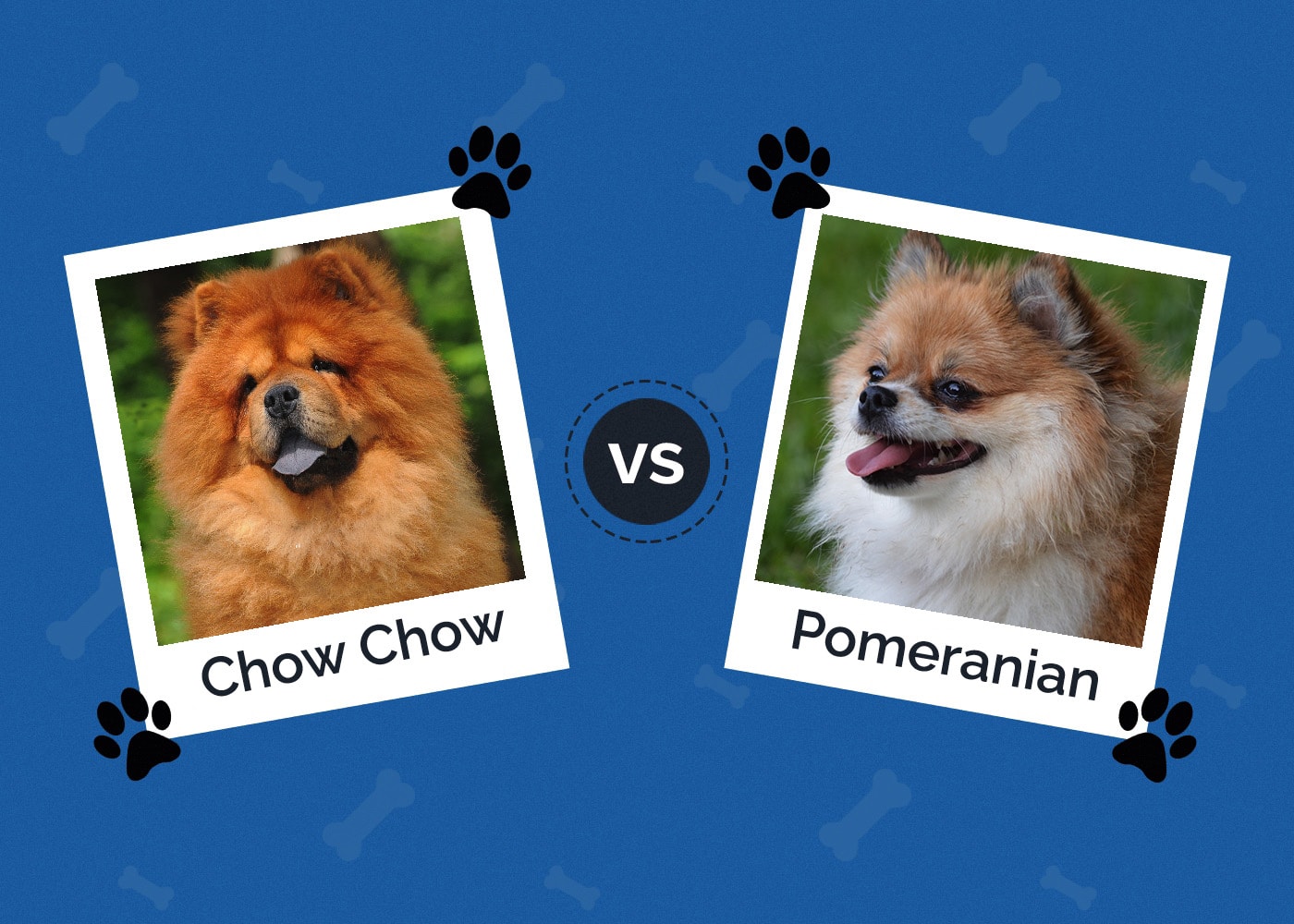
Chow chows and Pomeranians may have similar coats and other features. However, they are completely different breeds that work best for different families. The most obvious difference is in size. Chow Chows are much larger than Pomeranians. However, there are many other differences, too.
Once you learn a bit about each breed, choosing between them should be pretty straightforward. Let’s look at all the different ways these breeds differ.
Visual Differences
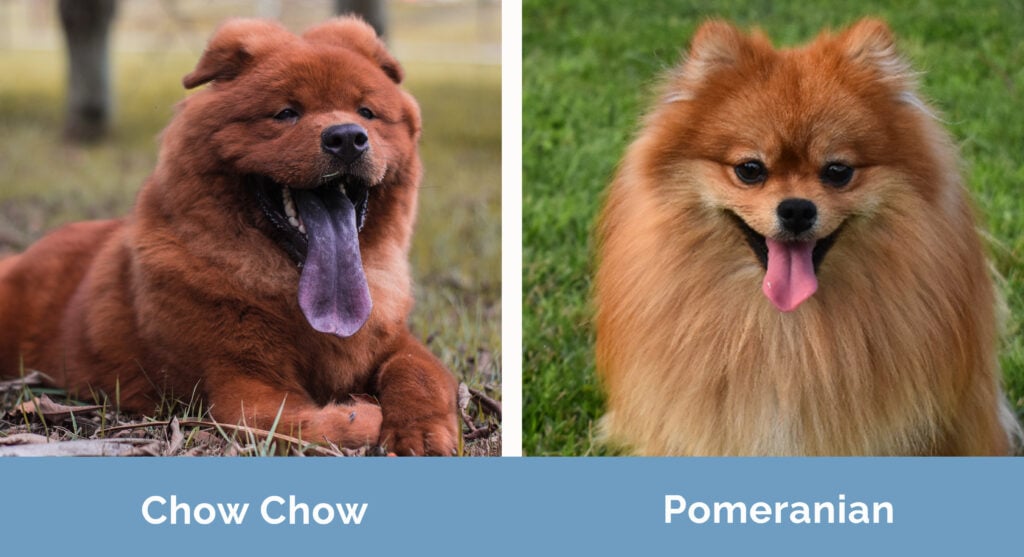
At a Glance
- Average height (adult): 18–22 inches
- Average weight (adult): 44–71 pounds
- Lifespan: 9–15 years
- Exercise: 1+ hours a day
- Grooming needs: Moderate
- Family-friendly: Somewhat
- Other pet-friendly: No
- Trainability: Difficult but very food-driven
- Average height (adult): 8–11 inches
- Average weight (adult): 4–7.7 pounds
- Lifespan: 12–16 years
- Exercise: 30 minutes per day
- Grooming needs: Moderate
- Family-friendly: Yes
- Other pet-friendly: Somewhat
- Trainability: Intelligent and eager to please
Chow Chow Overview
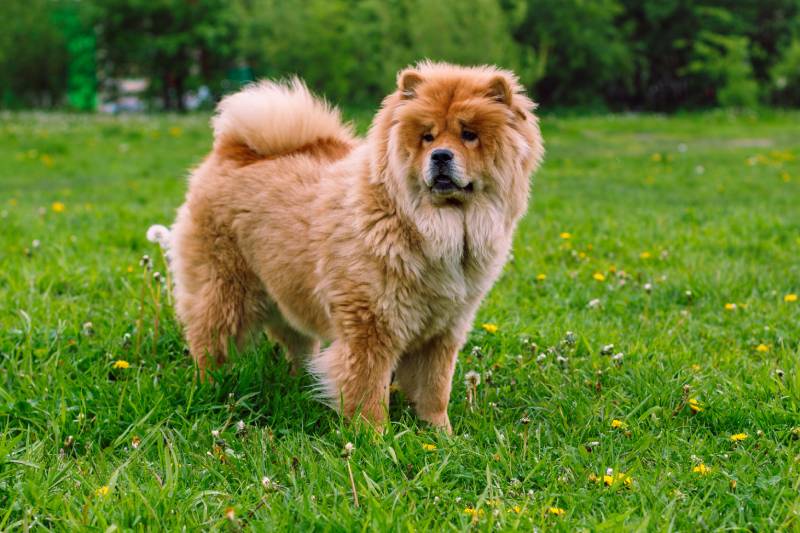
The Chow Chow originated from northern China and falls into the spitz category. They’re large, sturdy dogs with fluffy coats. Their fur is particularly fluffy around their neck, giving them the appearance of having a mane. They come in several colors: black, red, cream, and blue.
Temperament
Despite being kept mostly as pets, Chow Chows have strict guarding instincts. They are fiercely protective of their home and people. They require a lot of socialization at an early age to prevent aggression. Chow Chows aren’t super active, so they can be housed in an apartment or smaller home. However, they get bored easily, requiring plenty of stimulation. Toys, puzzle feeders, and games are vital to keeping a Chow Chow entertained on top of meandering walks. Chow Chows tend to be one-people dogs. In other words, they bond closely with one or two people within the family. They aren’t necessarily best for families for this reason.
Chow Chows are naturally well-behaved indoors but also resistant to training. They tend to be stubborn. They’re plenty intelligent enough to know what their owners want, but they tend not to listen. Therefore, training as early as possible is vital for success, as they become more stubborn as they age.
This breed is particularly aggressive towards dogs of the same gender. Therefore, they’re often best for homes without any other dogs. Early socialization can help, but Chow Chows will always be naturally suspicious of other canines.
Health
Chow Chows aren’t the unhealthiest dog breed out there but are prone to a few different conditions. For instance, they’re prone to eye problems, including glaucoma and cataracts. They’re at high risk for autoimmune diseases, though the exact reason is unknown.1
They’re also prone to a few different types of cancer, such as gastric cancer.2 Luckily, cancers tend to occur when the dog is older.
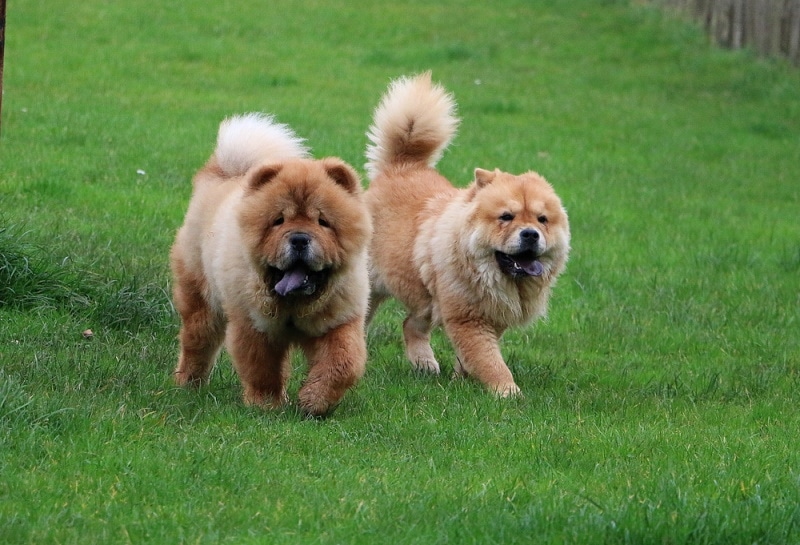
Grooming
Chow chows have very fuzzy coats. They tend to shed heavily in the spring and autumn when they require extra grooming. You’ll need to brush your Chow Chow regularly. Use the correct tools to prevent harming your dog’s skin and coat—a slicker brush and pin brush are both needed for different areas of their bodies. We recommend speaking with a groomer about the correct grooming method. It typically works best if you have someone show you how to care for a Chow Chow’s coat.
This breed can have two coat types: short and smooth or long and rough. The type of coat your dog has will affect their grooming needs.
Suitable For:
Chow Chows are best for single-person households or couples. They tend to bond closely with one or two people, so they don’t make the best family dogs. They also aren’t suitable for homes with any other dogs. They require lots of socialization and training at an early age, so it is often best to adopt one as a puppy.
Pomeranian Overview
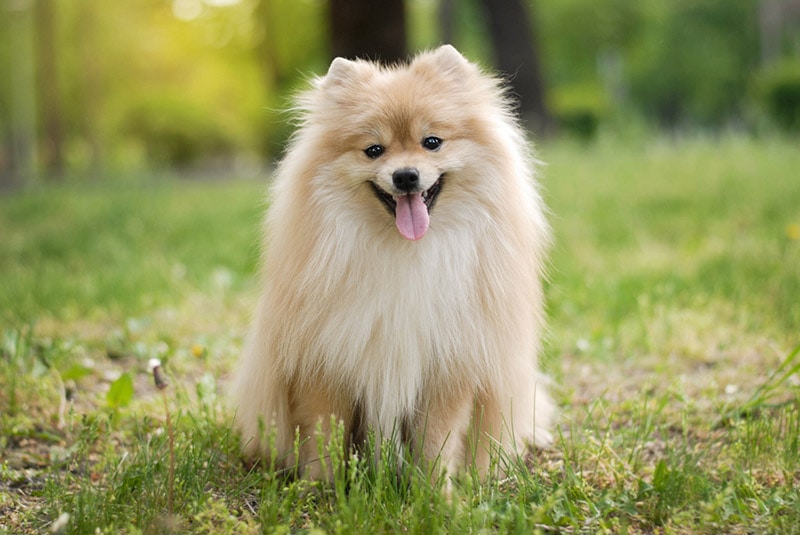
Pomeranians are much smaller than Chow Chows, though they have a similarly fluffy coat. They’re also spitz-type dogs, though they originate from Poland and Germany. They’re classified as toy breeds because they are smaller, though they were originally bred as working dogs.
Temperament
Pomeranians have been kept as companion animals for a long time. Therefore, they possess many characteristics that the average dog owner likes. They’re friendly and playful and often, they’re described as “personality dogs” due to their fun, bubbly personalities.
However, this breed is prone to aggression towards dogs and humans. They’re prone to “small dog syndrome”—a colloquial term describing small dogs that attempt to prove themselves by being aggressive towards larger animals. Often, this behavior occurs when smaller dogs like the Pomeranian aren’t confident. Because they’re fearful, they become aggressive. Therefore, getting your Pomeranian well-socialized and trained as a puppy is vital to having a well-behaved dog.
Pomeranians are intelligent and obedient. When trained, they tend to listen well and behave. They’re very extroverted and people-oriented, making them great dogs for families. However, they may be prone to separation anxiety. Therefore, training your puppy to be alone is vital to success.
Health
Pomeranians are healthy dogs as long as they are kept at a healthy weight. Because they’re small, many owners don’t exercise them properly, which can lead to weight gain.
Luxating patella is a common health issue in Pomeranians and other small dogs. It occurs when the kneecap slides out of place and moves freely around the leg. Pain is only felt when the kneecap initially slides out of place, so dogs often act like nothing is wrong after the initial injury.
They’re also prone to tracheal collapse, leading to the dog’s airway being closed. They don’t suffocate immediately, but the dog may sound like a goose. They’ll also be prone to fainting, exercise fatigue, and similar problems. Luckily, this condition can be fixed with surgery.
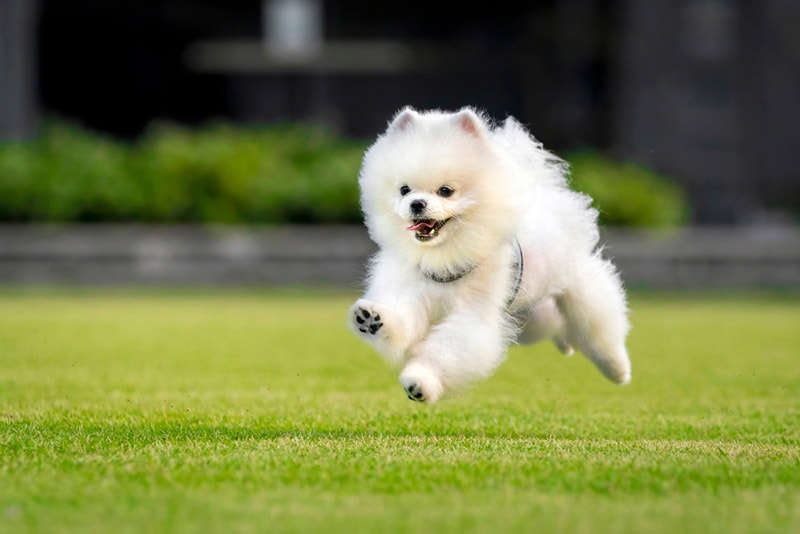
Grooming
Despite being very fluffy, Pomeranians don’t require extensive grooming. Instead, they only need to be brushed a few times a week to reduce shedding, though they may need to be brushed daily during heavy shedding seasons. Their nails must be trimmed like every other dog, and they may need their ears cleaned. Often, they aren’t particularly messy dogs, so baths aren’t needed all that often.
Bathing your dog too much can lead to dry skin. Therefore, you shouldn’t bathe your Pomeranian more than once a month unless they get particularly dirty.
Suitable For:
The Pomeranian is a great dog for families looking for a low-maintenance companion. They’re easy to train and often well-behaved. Plus, they’re also very affectionate and love just about everyone. Of course, be sure you have time to socialize and train them properly.
Which Breed Is Right for You?
Pomeranians and Chow Chows are very different. Pomeranians are extremely small, while Chow Chows are much bigger. They’re both suitable for smaller apartments and homes, as Chow Chows are often very well-behaved indoors. Chow Chows will require more outside exercise, though.
Pomeranians are best for families and those looking for a friendly companion. They’re loving and affectionate with everyone, as well as being easy to train and socialize with. They don’t require much work, making them perfect for first-time dog owners.
Chow Chows are a bit more difficult to raise. They have guarding instincts and tend to bond closely to one person. Therefore, they aren’t best for families if you want a canine to be involved with your children. In most cases, Chow Chows bond with one of the adults in the household. They’re very well-behaved indoors, though. They make sense for a bachelor or couple not planning on having children for a while.
See also: Samoyed vs Pomeranian: Which One Is Right for Me? (With Pictures)
Featured Image Credit: (L) Ricantimages, Shutterstock | (R) Trent Pickering, Unsplash


